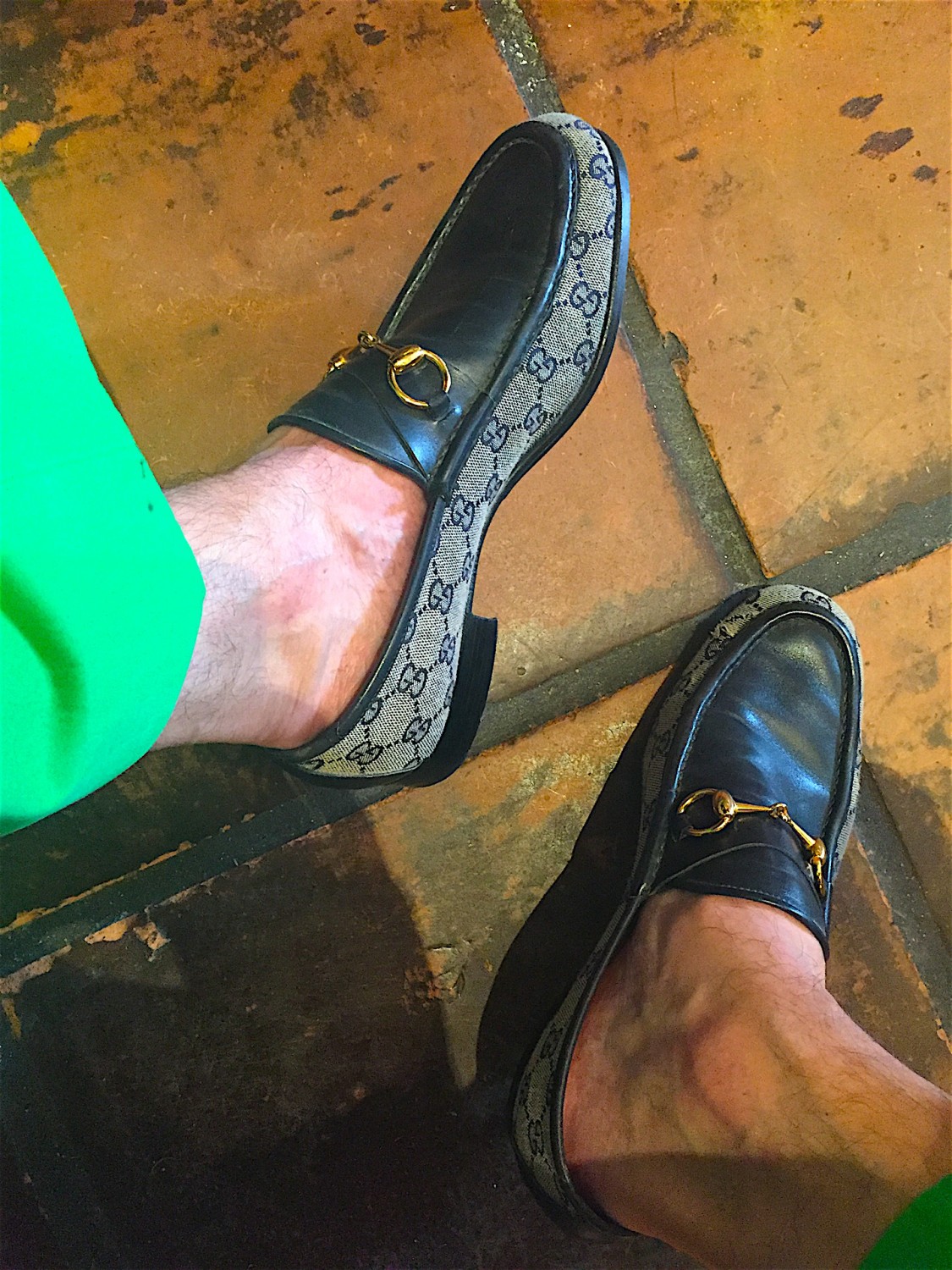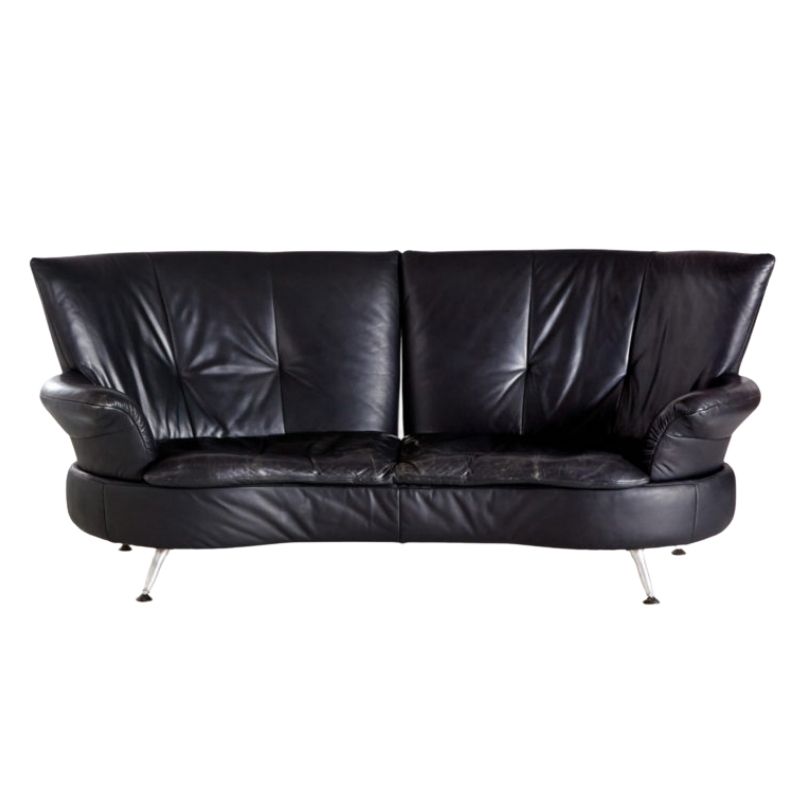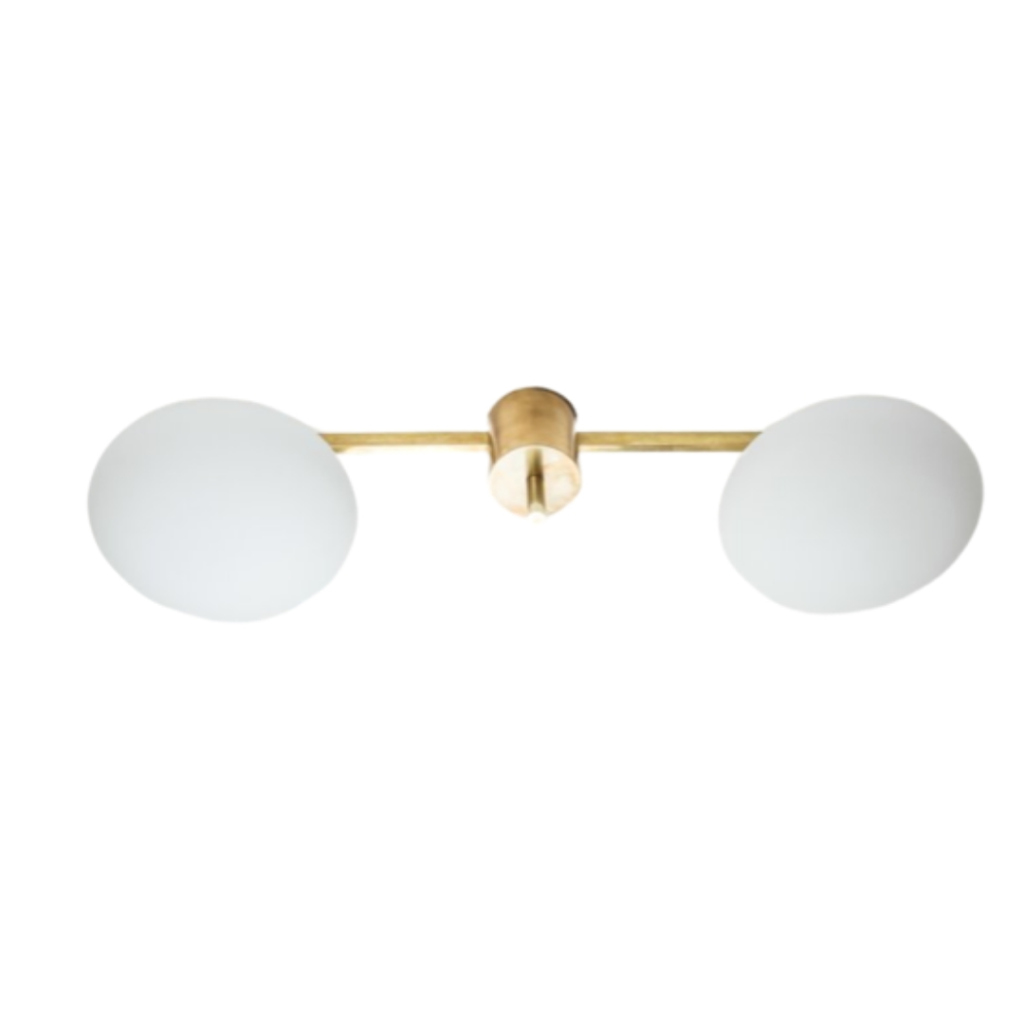Nice!!
I have not done one of those but I've done a bunch of chairs with that kind of weave it looks pretty much the same except that the seat and back share a rail, so you have to do the warp strands for each at the same time.
If you've never done that kind of warp strand where they go through a loop, it can be tricky. I find it tricky, anyway---it gets a lot easier after I've done it for awhile and can get into a rhythm, but it's a bit counterintuitive in that you have to go forward a couple of steps and then back a step (sort of). Also, you have to keep it pretty loose until you get every strand and loop in a pair in place, then you tighten it up----but when they are loose it's kind of hard to tell what's what and it's easy to go over when you're supposed to go through---stuff like that. But maybe I'm just really bad at that stuff, I dunno. If I haven't done one in awhile, I go a bit crazy at first having to correct mistakes.
Anyway---found this in a quick search and it looks helpful!
http://destoelenmatter.nl/site1/?q=node/84
if the wrap at the top slip down as you work, you can just put a small brad or nail into the wood next to the strand (not through it) to keep it in place. You could also clamp them but I know if I did that, the cord on the shuttle would catch on the clamp every five seconds and drive me crazy. Unless you have one of those cuff-type clamps that the guys in the Danish shops use. I wish i had a couple of those.
General instructions on how to do the looped warp strands here:
http://www.modernchairrestoration.com/2016/05/how-to-do-the-looped-warp-...
I am in the home stretch of weaving my first Yugo folding chair. It has been an excellent learning experience!
While it is turning out far better than what was there to start, there are definitely mistakes that were made. But then how do you get good at this type of thing, if you are not making mistakes?
I had a couple questions on the final steps here, that I am hoping experienced Danish cord weaveres might be able to help with:
- I have finished the chair back and also the warps on the seat. Now I am starting the wefts of the seat, and am looking at how to deal with the narrow slot on the side rails. To this point I have been doing the math, and then using velcro strips to keep my coil tidy, and then feeding the whole coil back and forth to do the weaving. But now this is no longer possible with the narrow slot on the side rail. I did the front part (where the handle is) easily enough, but this area does not require a really long length of cord, so weaving the whole length back and forth was not too bad. But now with the back part of the weft, I am looking at 4 times the cord length of the little part up front (200 some feet), which will definitely not be easy to keep from knotting up, or getting really twisted. Does anyone have any pointers for doing this section?
- Also interested in opinions on how best to tack the cord down at the ends. I used a staple gun on the chair I am currently working on, but this really looks kind of crude. Is there a tack of some sort that anyone would recommend? L-nails? Thoughts?
I am planning on putting together a post of all the things I learned from this experience, once I am through with this first chair. I have another of these Yugo folding chairs to do, and after that, I will probably rip all the cord off this first chair, and re-weave it, since I am unable to see past the flaws in my first attempt here.
Thanks!
Whenever the weave requires wrapping the cord entirely around the side rails, you have to use cut lengths of cord. The shorter the length, the easier it is to weave, though you also don't want to have a lot of joins in the cord if you can help it. So you have to determine the longest length you're comfortable with and work with that. Two hundred feet is way too long, in my opinion. My max is 60' but I've found that even that slows me down too much---the extra time spent untangling is more time than I would spend joining a new length. Lately I've been using more like 40-45'. (And actually I measure in yards---just a quick half-armspan's length, which is about a yard in my case. If you're really tall or really short, it will be different but not hugely. It's quicker and easier than measuring with a yardstick.)
Another thing to consider when deciding what length cord you want to work with is that it gets worn a bit when you pull it through the warp strands. The more passes, the greater the wear.
For the backs of these chairs, I tack or staple new cord on the inside edges of the frame. It shows but it's way better than a bulky knot, and I always lay the looped end of the new cord over the cut ends of the previous pair. It's a pain in the neck to do.
As for the narrow slots on the seat frame---I used to do the cord joins on these by tying the smallest knot possible, positioning it carefully so that when tightened it would be entirely hidden in the slot, then pounding it flat so that it would fit into the slot, then pulling it through. This was a pain to do and it barely fit even when flattened. It was also wide.
Then I came up with this other way which I love and is actually easier.
First, pull the ends of the working cord through the slot and mark where they exit the slot. Pull them back out and mark another point on the cords at about half of the width of the rail (inside the first marks).
Thread the loop end of the new double strand onto the cut ends of the old pair and fold the cut ends over the loop. Wrap the doubled pair of strands firmly with heavy duty upholstery thread on a sharp needle and take a few stitches to secure it. (Might work to wrap with fine wire, too---I used thread because I had some sitting there and it turned out to work great.)
Trim the ends close enough to the thread/wire wrap that they will not show past the slot in the rail. If you measured accurately, the entire thing will be hidden within the rail.


By now you've probably read my comment above. I hope it answers your question. The cord joins in that slot on my chair were about every 3" or so. Let me know if you don't get what I was talking about---I find it so much easier to just show people how to do something rather than write out directions. I'm hopelessly right-brained.
I think your weaving looks pretty good for a first try! Two things, if you're interested:
Make the warp strands tighter so that they don't get pulled out of line by the weft as you weave. I used to do mine kind of on the loose side but then I realized that I had to do a lot more adjusting of the weave when the chair was finished to get rid of the waviness. It's easier to just make them more taut to begin with.
To fix twisted strands, use an awl to work the twist to a less noticeable area. Twists on the top of a rail can be worked to the back side, and a twist in the middle of the weave can sometimes be hidden under the seat. It's always best to check your work constantly so that any mistakes can be fixed without having to rip out a lot of weaving, but sometimes you forget to check and sometimes even when you do, it's possible to miss stuff! (I miss stuff when I am only checking the work from one angle---some twists will blend right in unless until you look at the seat from directly above.)
To move a twist, just stick the awl between the strands where they cross and push the twist where you want it to go. Even twists in very tight wraps can be moved to a less noticeable area.
You can also do this to push the twist out completely if you don't have too far to go with it. After a point it's easier to just hide it or redo the wrap or weave completely, though.
You can use something other than an awl, like a small screwdriver or a knitting needle, but the awl has that nice round handle and the pointy end is less likely than a screwdriver to slip and gouge the cord. It also comes in very handy to straighten wavy warp strands, pack wraps as tightly as possible, and whatever other poking and prodding needs doing.
Great suggestions! Thank you!
I dont know what you are talking about, with writing out directions, I think you did wonderfully. I understood exactly what you are saying...as always.
Also, I do a lot of sailing, normally. I haven't for the last couple years because we sold our sailboat so that I could buy and consequently completely refinish our MCM home, but I used to make all my lines for the boat. This is kind of like 'whipping' a line, so I already have some of the tools and know-how to do this. I don't know why I did not think to try this earlier; Danish cord is really just 3-strand twisted nylon braid!
I suspect that you could use and end-to-end splice like the attached well, but I suspect that it would not be worth the time to do. If you are interested though, this is a good video on how to do it:
http://1080.plus/Braiding_Splicing_3_Strand_Rope/AD_-3pGiRYE.video
Also, I did have the warps on the back super tight, I think I might have caused the waviness because I weaved the weft in two, really long pieces. Pushing that much cord back and forth through super-tight warps is probably what did it. I actually thought that I should make the warps more loose in the future, but in actuality, it is probably a balance of tightness, and just doing shorter cord runs and joining more...
Great suggestion on the awl. I will give that a try as I have a few twists that I can move out of view. Of course, the awl wont help the completely missed wrap on the top right of the chair back. I did not see that one until I was 5 courses past it, and with all the cord I was pushing, I decided not to go back (after much deliberation).
Thanks---it's just so much easier to show someone than to work out the wording for concise written directions! I usually reread and edit several times before posting. Sometimes it takes forever! The very basic directions I wrote up for weaving Yugo chairs took all freakin' day and they were only a page long. Gah.
Anyway...
I get paper cord from Perkins and theirs has those very neat splices. I've done it with yarn when knitting but so far I'm ok with other joining methods with paper cord. It's always good to have some tricks set aside for special cases, though.
I realized rather late in the game that mistakes in the weft can sometimes be fixed by just undoing to the nearest join and reweaving from there. Of course this doesn't work so well on something like a Møller chair where you weave off the spool, but when the weave requires cut lengths for the weft, it sometimes works out quite well. It's also a good reason to weave with shorter lengths of cord.
I was having a bad time with a Yugo chair once---whole lotta mistakes in just the first foot or two of the back, mostly due to being distracted. One of them was a twist in the second or third pass after a join and it was just easier to undo the join and work the twist back to end and then just retack it. Whew. (There's not a good place to hide weft twists on any part of the backs of these chairs, unfortunately. The least bad place is on the side of the frame but even that interrupts the pattern from certain angles.)
If you need any help, please contact us at – info@designaddict.com











